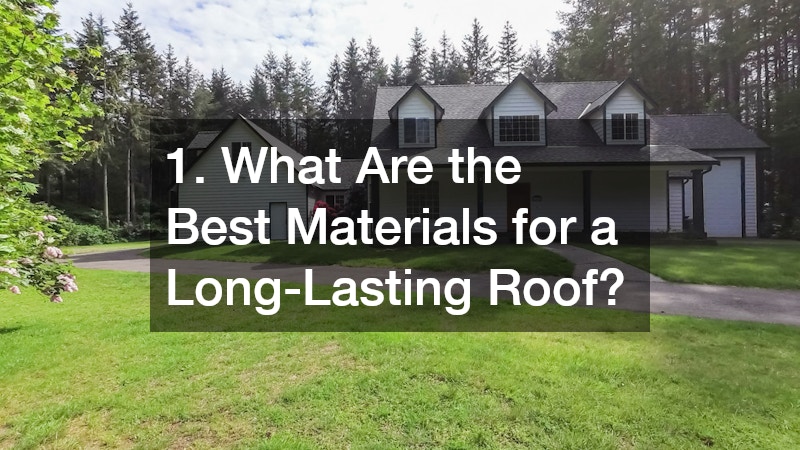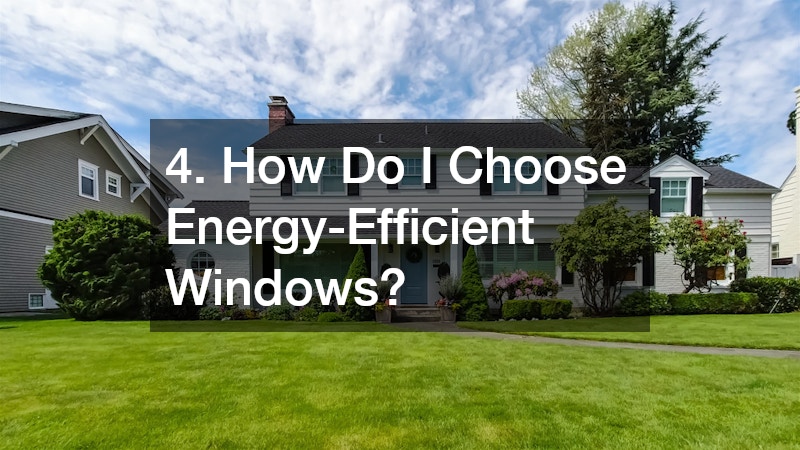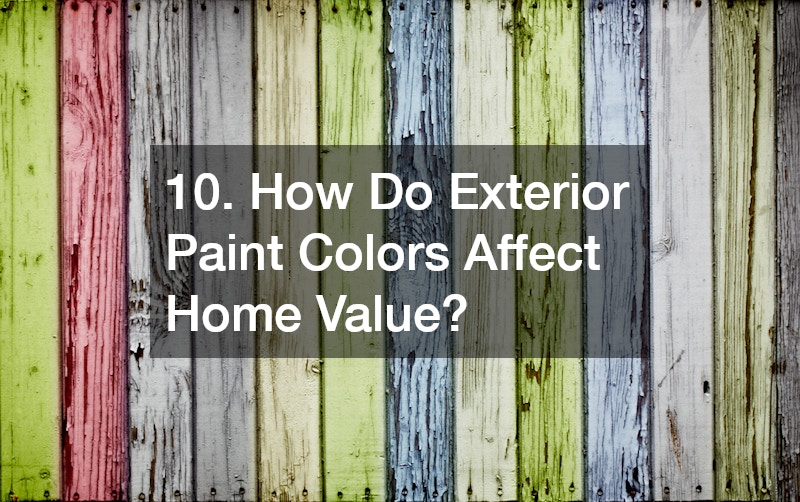Top Exterior Home Improvements That Add Value and Style
Your home’s exterior is the first impression it makes—both to visitors and potential buyers. Beyond mere aesthetics, the way your home looks from the outside speaks volumes about how well it’s maintained, its energy efficiency, and even its overall value. In today’s real estate market, exterior upgrades have one of the highest returns on investment, often improving both resale potential and day-to-day comfort.
From updating the siding to installing a new front door, modern homeowners are discovering that exterior improvements not only beautify their homes but also enhance functionality. Materials and design trends have evolved to provide long-term durability, sustainability, and efficiency. Whether you’re preparing to sell or simply want to fall in love with your home all over again, thoughtful exterior renovations can make a dramatic difference.
In this article, we’ll explore the top ten exterior home improvements that add both value and style. You’ll learn about the best roofing materials, landscaping strategies, siding options, window upgrades, and more—all with professional insights from trades like pool companies, deck refacing services, and roofing contractors who specialize in enhancing outdoor spaces. By the end, you’ll have a clear understanding of which projects to prioritize for the greatest impact on your home’s beauty and resale value.
1. What Are the Best Materials for a Long-Lasting Roof?

A roof does more than just protect your home—it defines its architectural style and energy efficiency. Choosing the right roofing material can drastically improve both curb appeal and longevity. Homeowners have several durable and stylish options to consider.
Asphalt shingles remain one of the most popular choices due to affordability and versatility. They come in a variety of colors and textures, allowing homeowners to mimic more expensive materials like slate or wood. However, for homeowners seeking longevity, metal roofing has surged in popularity. Not only can it last 50 years or more, but it also reflects sunlight, lowering cooling costs during the summer months.
Clay and concrete tiles offer timeless charm, especially for Mediterranean or Spanish-style homes. While heavier and pricier, they provide excellent durability against harsh weather conditions. For environmentally conscious homeowners, synthetic or recycled materials—such as composite shingles made from polymers—combine sustainability with strength.
Many pool companies note that roofing materials can also complement outdoor features. A sleek metal or tile roof pairs beautifully with modern poolscapes, creating a cohesive and luxurious outdoor aesthetic. Investing in high-quality roofing materials not only enhances visual appeal but also provides peace of mind knowing your home is well protected for decades.
2. How Can Landscaping Increase Home Value?
Landscaping is one of the most cost-effective ways to increase home value. Well-designed outdoor spaces can yield a return on investment of up to 200%, making it one of the smartest exterior upgrades. Beyond aesthetics, landscaping improves energy efficiency, privacy, and outdoor usability.
Start by focusing on curb appeal basics—a neatly manicured lawn, trimmed hedges, and strategically placed flower beds. Add dimension and texture with layers of shrubs, ornamental grasses, and flowering perennials that bloom at different times of the year.
Deck refacing services often work hand-in-hand with landscaping professionals to unify the backyard’s appearance. By updating or refinishing an existing deck, homeowners can create seamless transitions between indoor and outdoor living areas. Incorporate built-in seating, planters, or outdoor lighting to elevate functionality.
Consider sustainable landscaping elements like native plants, drought-tolerant gardens, and efficient irrigation systems to reduce water usage. Adding trees strategically can also lower cooling costs by providing shade in summer. A well-thought-out landscape design not only enhances beauty but also signals to potential buyers that the property has been carefully maintained.
3. What Types of Siding Offer the Most Curb Appeal?
Siding is one of the most visible components of a home’s exterior—and replacing outdated or damaged siding can completely transform its look. Beyond appearance, modern siding materials improve insulation, durability, and weather resistance.
Vinyl siding remains a top choice for affordability and minimal maintenance. Available in a vast range of colors and styles, it’s easy to customize to any architectural design. For those seeking a more natural aesthetic, wood siding provides timeless charm but requires regular maintenance to prevent decay or insect damage.
Fiber cement siding is another excellent option, combining the beauty of wood with the durability of concrete. Resistant to rot, fire, and pests, it’s ideal for homeowners who want both elegance and longevity.
Custom fence builders often coordinate siding colors and materials with fencing designs to create a cohesive visual appeal. Matching or complementary textures between siding and fencing can elevate your home’s exterior style dramatically. No matter the choice, high-quality siding not only boosts curb appeal but also strengthens the structural protection of your home.
4. How Do I Choose Energy-Efficient Windows?

Windows are a crucial factor in both comfort and energy savings. Outdated or poorly insulated windows can cause energy loss, drafts, and higher utility bills. When upgrading, it’s essential to select windows that are not only stylish but also energy-efficient.
Look for Energy Star-rated windows, which meet rigorous efficiency standards. These windows are designed to minimize heat transfer, keeping interiors cool in the summer and warm in the winter. Double or triple-pane glass with low-emissivity (Low-E) coatings helps regulate indoor temperature while reducing UV exposure that can fade furnishings.
Frame materials also play a key role. Vinyl and fiberglass frames are excellent insulators and require minimal upkeep. Wood-clad windows offer a warm, traditional appearance while maintaining energy performance through composite exteriors.
Shed builders often emphasize how window placement and type can influence natural light flow and comfort within outbuildings and backyard structures. Similarly, homeowners can use strategic window placement to enhance their home’s exterior symmetry while optimizing interior brightness. With the right selection, energy-efficient windows can improve comfort, style, and long-term property value simultaneously.
5. What’s the Impact of a New Front Door?
Your front door serves as the focal point of your home’s exterior. It’s the first element visitors and buyers notice, making it a powerful symbol of style and security. Replacing an outdated door can instantly refresh your home’s appearance and improve energy efficiency.
Modern steel or fiberglass doors provide excellent insulation and durability while mimicking the elegance of wood. These options resist warping, cracking, and moisture damage—common issues with older wooden doors. Composite materials, similar to those used in composite decking installation, offer exceptional resilience and customizable finishes.
A bold door color can add a striking design statement. Shades like navy, red, or forest green contrast beautifully with neutral siding tones. Beyond aesthetics, a high-quality door enhances home security and may reduce energy costs by improving the thermal seal.
6. How Important Are Garage Doors to Curb Appeal?
Garage doors often occupy a large portion of a home’s facade, making them a significant factor in curb appeal. An outdated or damaged garage door can drag down the look of an otherwise beautiful home, while a modern, stylish door can elevate the entire exterior.
Homeowners today have a wide range of materials and designs to choose from, including steel, aluminum, wood composite, and carriage-style doors. Insulated garage doors not only improve energy efficiency but also provide noise reduction and enhanced durability.
A paving contractor might suggest coordinating your garage door design with the driveway’s surface material and layout. For example, a modern glass-paneled garage door pairs beautifully with a sleek concrete driveway, while rustic wooden doors complement paver or cobblestone paths.
Adding smart technology—like Wi-Fi-enabled openers or motion-sensor lighting—boosts both convenience and security. Since garage doors can yield an ROI of over 90%, replacing one is one of the most financially sound exterior upgrades a homeowner can make.
7. Should I Invest in Outdoor Living Spaces?

Outdoor living has become one of the most desirable features for modern homeowners. Decks, patios, pergolas, and outdoor kitchens extend living spaces, providing comfort and entertainment areas that enhance lifestyle and home value alike.
Driveway contractors often collaborate with homeowners to integrate outdoor spaces seamlessly into the property’s overall layout. Expanding paved areas to include seating zones or pathways can create a more functional and visually cohesive design.
A deck refacing service or composite decking installer can transform an old, weathered deck into a beautiful retreat with minimal maintenance. Composite decking resists rot, fading, and splintering while offering a variety of color and texture options that mimic natural wood.
For added appeal, consider integrating shade structures, built-in seating, or outdoor fireplaces. If you have a pool, coordinate your deck or patio materials with surrounding landscaping for a unified look. Investing in outdoor living spaces not only increases your home’s usability but also enhances its desirability to potential buyers.
8. How Can I Enhance My Home’s Exterior Lighting?
Proper lighting is essential for both safety and ambiance. Thoughtful exterior lighting transforms your home’s look after sunset while improving visibility and security.
Start with pathway lighting to illuminate walkways and driveways, ensuring safe navigation. Wall-mounted sconces, recessed entry lights, and pendant fixtures can highlight architectural details or draw attention to specific features like doors and columns.
General contractors often recommend layering lighting for optimal effect: ambient lighting for overall illumination, task lighting for functionality, and accent lighting for design impact. Incorporating LED technology not only reduces energy consumption but also extends bulb lifespan.
For added convenience, install motion sensors or smart lighting systems that allow you to control brightness and timing remotely. Highlighting landscaping elements—such as trees, fountains, or sculptures—can give your home a high-end, resort-like feel. Exterior lighting is a subtle yet powerful way to add charm, safety, and sophistication to your property.
9. What Are the Benefits of Adding a Front Porch?
A front porch does more than just enhance visual appeal—it creates a welcoming space for relaxation and social connection. Whether you prefer a small, covered entry or an expansive wraparound design, a porch adds both functionality and charm to your home’s exterior.
Porches offer a comfortable buffer between indoors and outdoors, providing protection from the elements and an ideal spot for seasonal decor. Adding features like composite decking, railings, and ceiling fans can further enhance usability and style.
Painting companies often emphasize the importance of color and finish when designing a porch. Coordinating trim, railing, and ceiling tones with the rest of the home creates visual harmony. For older homes, a new porch can revitalize the entire facade, while for new builds, it can add character and depth.
10. How Do Exterior Paint Colors Affect Home Value?

Paint is one of the simplest yet most transformative exterior upgrades. The right color palette can make your home appear larger, more modern, and more inviting. Conversely, outdated or faded paint can diminish curb appeal and perceived value.
Roofing companies often coordinate roof colors with exterior paint schemes to ensure balance and cohesion. For example, a dark gray roof pairs beautifully with light blue or beige siding, while earthy roof tones complement warm neutrals like taupe or cream.
When selecting paint, consider both your home’s architectural style and its surroundings. Neutral tones like white, gray, and soft beige appeal to a wide range of buyers and create a timeless look. Accent colors on shutters, doors, or trim can add personality without overwhelming the design.
Investing in high-quality, weather-resistant paint ensures durability against UV rays, moisture, and temperature fluctuations. Proper preparation and professional application by experienced painters are key to achieving a flawless, long-lasting finish.
A fresh coat of paint not only refreshes your home’s appearance but can also increase its resale value by as much as 5–10%, making it a smart, cost-effective improvement.
Upgrading your home’s exterior is one of the most rewarding investments you can make. From durable roofing and stylish siding to inviting porches and energy-efficient windows, each enhancement contributes to your home’s beauty, comfort, and value.
The key to maximizing results lies in strategic planning—choosing improvements that complement one another while meeting your budget and lifestyle goals. Collaborating with skilled professionals such as roofing companies, deck refacing services, pool contractors, and general builders ensures each project is completed with quality and precision.
Ultimately, a well-maintained and thoughtfully designed exterior doesn’t just boost property value—it transforms your house into a home you’re proud to showcase. With careful selection and expert craftsmanship, your home’s exterior can exude timeless style and lasting value for years to come.


